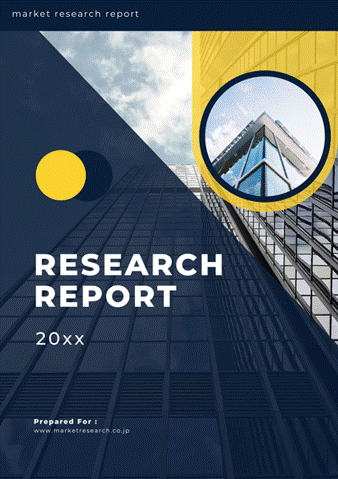 | • レポートコード:D0-MOR-AP0530 • 出版社/出版日:Mordor Intelligence / 2020年4月20日 • レポート形態:英文、PDF、100ページ • 納品方法:Eメール(受注後2-3営業日) • 産業分類:食品&飲料 |
| Single User | ¥629,000 (USD4,250) | ▷ お問い合わせ |
| Team User | ¥703,000 (USD4,750) | ▷ お問い合わせ |
| Corporate License | ¥1,110,000 (USD7,500) | ▷ お問い合わせ |
• お支払方法:銀行振込(納品後、ご請求書送付)
レポート概要
| 本調査レポートは、炭酸飲料加工装置の世界市場について調査・分析した資料で、炭酸飲料加工装置の市場概要、動向、セグメント別市場規模、地域別分析、競争状況、企業情報、市場機会分析などで構成されています。 |
The global carbonated beverage processing equipment market is projected to grow, witnessing a CAGR of 4.47% during the forecast period (2020-2025).
– The carbonated beverage processing equipment market is driven by factors such as carbonated soft drink manufacturers’ requirement for advanced equipment with multi functional features and optimum output, and increased consumption of the carbonated soft drink due to hot and humid climatic conditions.
– Moreover, consumers are becoming more health-conscious and are ready to spend on products that are healthy, the market players are concentrating on improving their product portfolio by manufacturing carbonated drinks that are low in sugar, cholesterol, fat, but are high in flavors. Thus, market players are taking initiatives and are making huge investments to expand their business by introducing new beverages that contain essential micro nutrients which add on to the market for carbonated beverage processing equipment market.
Key Market Trends
Growing Demand for Low Calorie Carbonated Drinks
Owing to busy lifestyles, ready-to-drink beverages have become popular among consumers. The growing demand for clean-label, gluten-free, low-calorie and low-carb products, has led to the elevation of the low-calorie ready to drink carbonated beverages market in the food industry. The growth in the overall functional beverage market and increasing health consciousness among consumers has fueled the growth of the low-calorie carbonated beverages market. Developing nations of Asia-Pacific and South America are likely to adopt the trend of low-calorie beverages in the years to come, and fuel the market for carbonated beverage processing equipment. In order to widespread the trend, even alcohol companies are coming up with low-calorie drinks for the consumers.
– For instance, in 2017, Diageo launched a low-calorie Seltzer under its brand Smirnoff. The company also offers these low-calorie RTD beverages which have also have low carbohydrates, zero-sugar and artificial sweeteners.
North America and Europe Region Leading The Market
North America is estimated to represent the largest share of the worldwide carbonated beverages processing equipment market in terms of value. This is mainly owing to the introduction of new types of carbonated beverages, including ones which are targeted towards health-conscious consumers as well. However, the Asia-Pacific region have the potential for high growth during the period under consideration. This is owing to the rapid urbanization of various areas in the Asia-Pacific region as well as the increase in consumption of carbonated beverages among people due to the influence of western eating habits and lifestyle.
Competitive Landscape
Key market players include Zoppas Industries SpA, A DUE Spa, GEA Group Aktiengesellschaft, Alfa Laval AB, Krones AG, and others. These companies are focusing on strategies such as new product launches, expansions & investments, acquisitions, agreements, joint venture, and partnerships to expand their operations across the globe.
Reasons to Purchase this report:
– The market estimate (ME) sheet in Excel format
– 3 months of analyst support
1 INTRODUCTION
1.1 Study Deliverables
1.2 Study Assumptions
1.3 Scope of the Study
2 RESEARCH METHODOLOGY
3 EXECUTIVE SUMMARY
4 MARKET DYNAMICS
4.1 Market Drivers
4.2 Market Restraints
4.3 Porter’s Five Forces Analysis
4.3.1 Threat of New Entrants
4.3.2 Bargaining Power of Buyers/Consumers
4.3.3 Bargaining Power of Suppliers
4.3.4 Threat of Substitute Products
4.3.5 Intensity of Competitive Rivalry
5 MARKET SEGMENTATION
5.1 By Equipment Type
5.1.1 Sugar Dissolvers
5.1.2 Carbonation Equipments
5.1.3 Blenders & Mixers
5.1.4 Heat Exchangers
5.1.5 Other Equipments
5.2 By Beverage Type
5.2.1 Flavored Drinks
5.2.2 Functional Drinks
5.2.3 Club Soda & Sparkling Water
5.3 By Geography
5.3.1 North America
5.3.1.1 United States
5.3.1.2 Canada
5.3.1.3 Mexico
5.3.1.4 Rest of North America
5.3.2 Europe
5.3.2.1 Germany
5.3.2.2 United Kingdom
5.3.2.3 France
5.3.2.4 Russia
5.3.2.5 Spain
5.3.2.6 Italy
5.3.2.7 Rest of Europe
5.3.3 Asia-Pacific
5.3.3.1 India
5.3.3.2 China
5.3.3.3 Japan
5.3.3.4 Australia
5.3.3.5 Rest of Asia-Pacific
5.3.4 South America
5.3.4.1 Brazil
5.3.4.2 Colombia
5.3.4.3 Rest of South America
5.3.5 Middle East and Africa
5.3.5.1 South Africa
5.3.5.2 Saudi Arabia
5.3.5.3 Rest of Middle East and Africa
6 COMPETITIVE LANDSCAPE
6.1 Most Active Companies
6.2 Most Adopted Strategies
6.3 Market Share Analysis
6.4 Company Profiles
6.4.1 Zoppas Industries SpA
6.4.2 A DUE Spa
6.4.3 GEA Group Aktiengesellschaft
6.4.4 Alfa Laval AB
6.4.5 Krones AG
6.4.6 SPX Flow Inc.
6.4.7 KHS Group
6.4.8 Tetra Laval International S.A.
7 MARKET OPPORTUNITIES AND FUTURE TRENDS